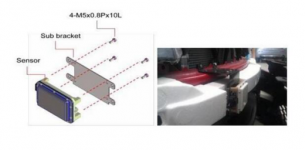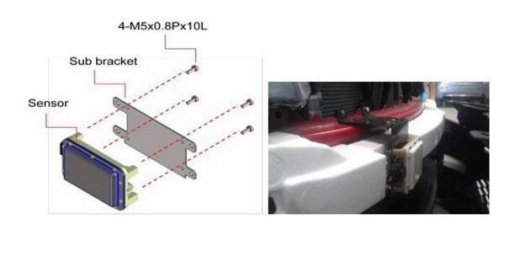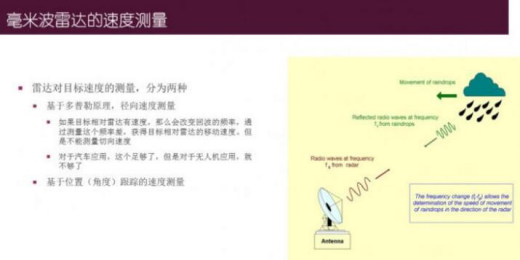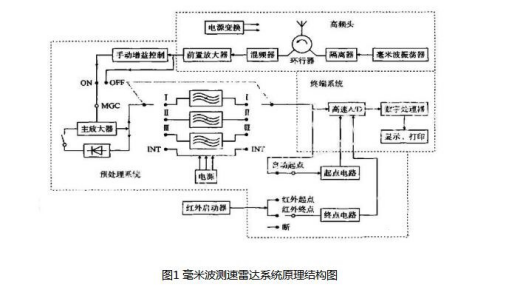
Explain the working principle of millimeter-wave radar and analyze the advantages and disadvantages of millimeter-wave radar
“The successful application of millimeter wave in many aspects makes millimeter wave technology one of the current dark horses. For example, the 5G technology developed by major mobile phone manufacturers is inseparably linked with millimeter waves. However, the explanation of millimeter wave in this article is mainly to introduce the working principle of millimeter wave radar and the advantages and disadvantages of millimeter wave radar. The main text is as follows.
“
The successful application of millimeter wave in many aspects makes millimeter wave technology one of the current dark horses. For example, the 5G technology developed by major mobile phone manufacturers is inseparably linked with millimeter waves. However, the explanation of millimeter wave in this article is mainly to introduce the working principle of millimeter wave radar and the advantages and disadvantages of millimeter wave radar. The main text is as follows.
1. The concept of millimeter wave radar
The so-called millimeter wave is a section of radio waves. We call the electromagnetic wave with a wavelength of 1 to 10 millimeters a millimeter wave. It is located in the wavelength range where microwaves and far-infrared waves overlap, so it has the characteristics of both spectrums. The theory and technology of millimeter wave are the extension of microwave to high frequency and the development of light wave to low frequency.
The so-called millimeter wave radar refers to the radar whose working frequency band is in the millimeter wave frequency band. The ranging principle is the same as that of the general radar, that is, the radio wave (radar wave) is sent out, and then the echo is received, which is measured according to the time difference between sending and receiving. The location data of the target. Millimeter wave radar is the frequency of this radio wave is the millimeter wave band.
Second, the characteristics of millimeter wave radar
①In the case of the same antenna diameter, the millimeter-wave radar has a narrower beam (generally in the order of milliradians), which can improve the angular resolution and angle measurement accuracy of the radar, and is conducive to anti-Electronic interference, clutter interference and multi-dimensional interference. Path reflection interference, etc.
② Due to the high operating frequency, it is possible to obtain a large signal bandwidth (such as the order of gigahertz) and Doppler frequency shift, which is beneficial to improve the measurement accuracy and resolution of distance and speed and to analyze target characteristics.
③The antenna diameter and components and devices are small in size, suitable for aircraft, satellite or missiles.

Third, the advantages and disadvantages of millimeter wave radar
1. Advantages:
Compared with other sensor systems, mmWave radar has the following advantages:
(1) High resolution and small size; since the size of the antenna and other microwave components is related to the frequency, the antenna and microwave components of the millimeter-wave radar can be small, and the small antenna size can obtain a narrow beam.
(2) Interference, although atmospheric attenuation limits the performance of millimeter-wave radars, it helps to reduce the mutual influence when many radars work together.
(3) Compared with infrared systems often used to compare with millimeter-wave radars, one advantage of millimeter-wave radars is that distance and velocity information can be directly measured.
2. Disadvantages:
(1) Compared with microwave radar, the performance of millimeter-wave radar has declined for the following reasons:
The power of the transmitter is low;
Large losses in waveguide devices
(2) It has a great relationship with the weather, and it is more serious when it rains;
(3) In the air defense environment, distance ambiguity and speed ambiguity will inevitably occur;
(4) Millimeter-wave devices are expensive, and equipment cannot be mass-produced

4. Millimeter-wave radar speed measurement method
The speed measurement of millimeter-wave radar is the same as that of ordinary radar. One is based on the dopler principle, that is, when the emitted electromagnetic wave and the detected target move relatively, the frequency of the echo will be different from the frequency of the emitted wave. By detecting this frequency difference, the moving speed of the target relative to the radar can be measured. However, this method cannot detect the tangential velocity. The second method is to obtain the velocity by differentiating the position by tracking the position.

5. The working principle of millimeter wave radar
The millimeter wave speed measuring radar system is mainly composed of a tuner, a preprocessing system, a terminal system and an infrared starter, and its principle structure is shown in Figure 1.
The millimeter-wave oscillator generates millimeter-wave (8mm) oscillation, and its frequency is set to f0, which is added to the circulator through the isolator, and then radiated by the antenna, and propagates in the form of electromagnetic waves in space. When the electromagnetic wave encounters the target in space ( projectile) reflected back. If the target is moving, the reflected electromagnetic wave frequency is added with a Doppler frequency fd proportional to the target moving speed vr, so that the reverse echo frequency becomes f0±fd (the target is flying close to take “+”, the target Take “%” away from the flight), this echo is received by the antenna, added to the mixer through the circulator, and mixed with the signal leaked through the circulator (as the local oscillator signal) f0 in the mixer. The mixer is a nonlinear element, and its output has a variety of sum and difference frequencies, such as fd, f0±fd, 2f0±fd, …, etc. After the preamplifier selects the frequency Doppler signal (frequency is fd), and then It is sent to the main amplifier of the preprocessing system through a long cable (length 50-100m). The main amplifier is equipped with automatic gain control and manual gain control circuits. Manual gain is used to adjust the overall gain of the amplifier, and automatic gain control is used to increase the dynamic range of the amplifier.
Internal ballistics testing generally does not use automatic gain control. Automatic gain control is only suitable for testing external ballistics, because during external ballistic testing, in order to avoid the interference of muzzle flames, etc., the test should be started after an appropriate delay.

The millimeter wave speed measuring radar system is mainly composed of a tuner, a preprocessing system, a terminal system and an infrared starter, and its principle structure is shown in Figure 1.
The millimeter-wave oscillator generates millimeter-wave (8mm) oscillation, and its frequency is set to f0, which is added to the circulator through the isolator, and then radiated by the antenna, and propagates in the form of electromagnetic waves in space. When the electromagnetic wave encounters the target in space ( projectile) reflected back. If the target is moving, the reflected electromagnetic wave frequency is added with a Doppler frequency fd proportional to the target moving speed vr, so that the reverse echo frequency becomes f0±fd (the target is flying close to take “+”, the target Take “%” away from the flight), this echo is received by the antenna, added to the mixer through the circulator, and mixed with the signal leaked through the circulator (as the local oscillator signal) f0 in the mixer. The mixer is a nonlinear element, and its output has a variety of sum and difference frequencies, such as fd, f0±fd, 2f0±fd, …, etc. After the preamplifier selects the frequency Doppler signal (frequency is fd), and then It is sent to the main amplifier of the preprocessing system through a long cable (length 50-100m). The main amplifier is equipped with automatic gain control and manual gain control circuits. Manual gain is used to adjust the overall gain of the amplifier, and automatic gain control is used to increase the dynamic range of the amplifier.
Internal ballistics testing generally does not use automatic gain control. Automatic gain control is only suitable for testing external ballistics, because during external ballistic testing, in order to avoid the interference of muzzle flames, etc., the test should be started after an appropriate delay.
The Links: SKM100GAL123D LAM0353542C



